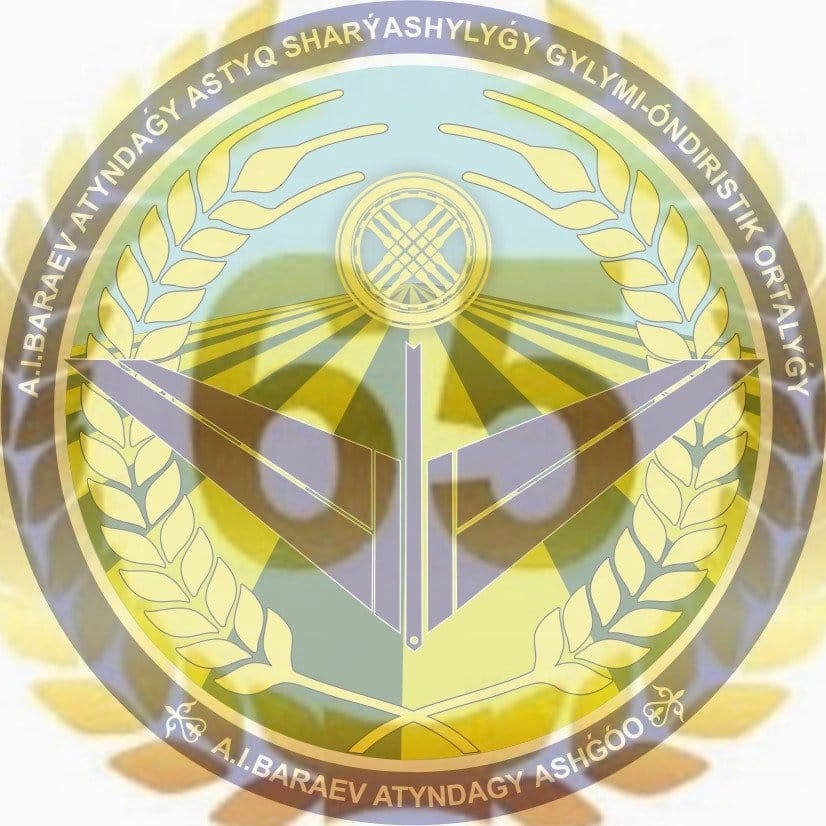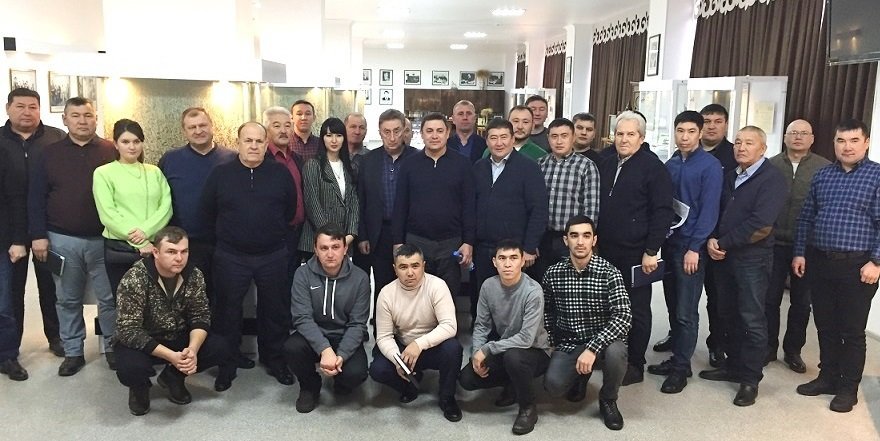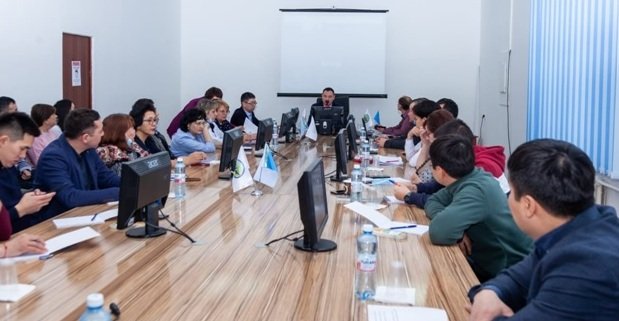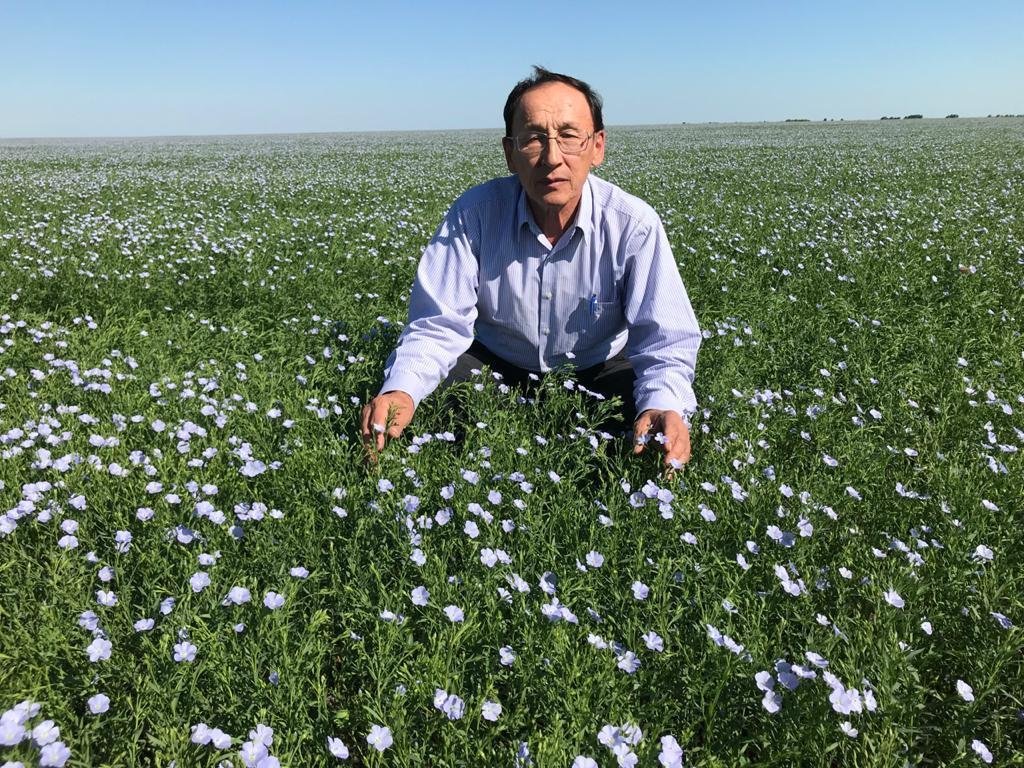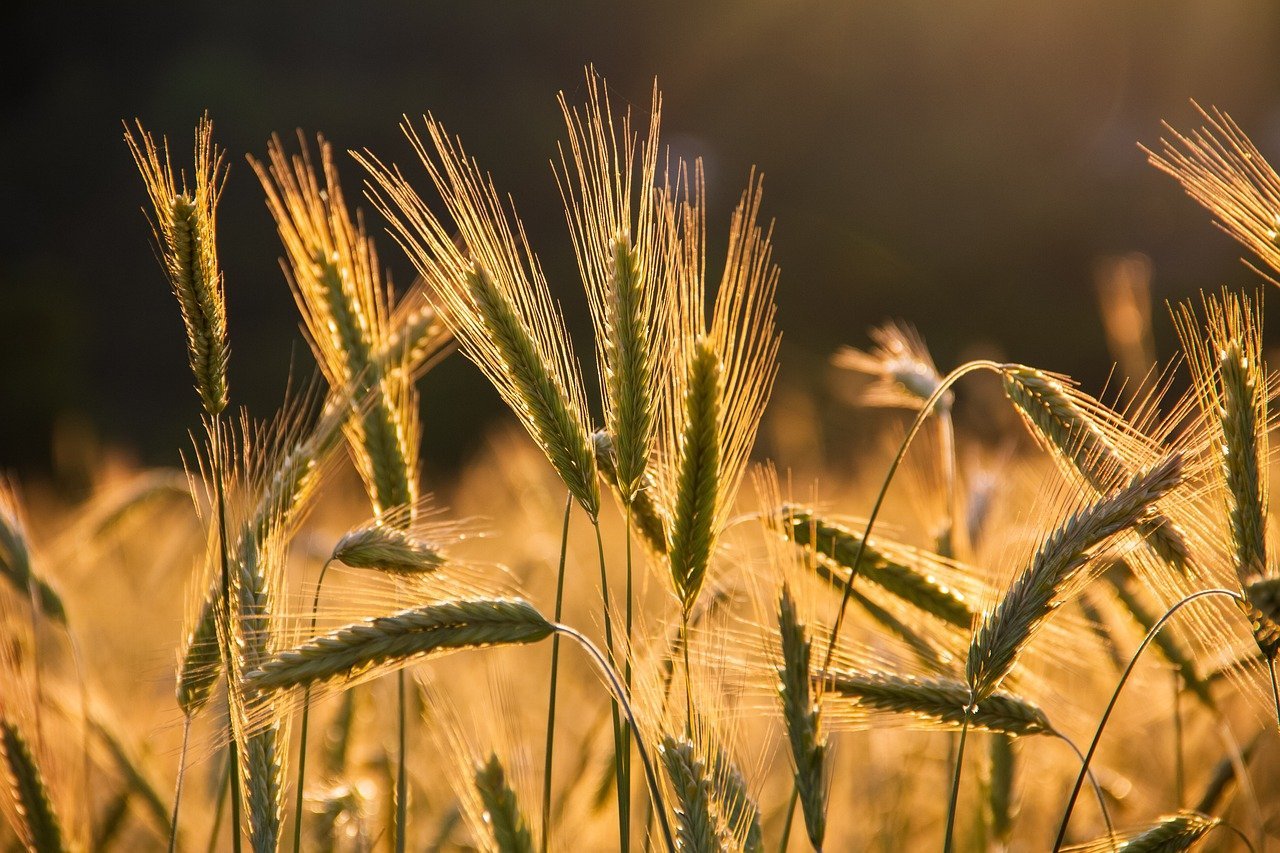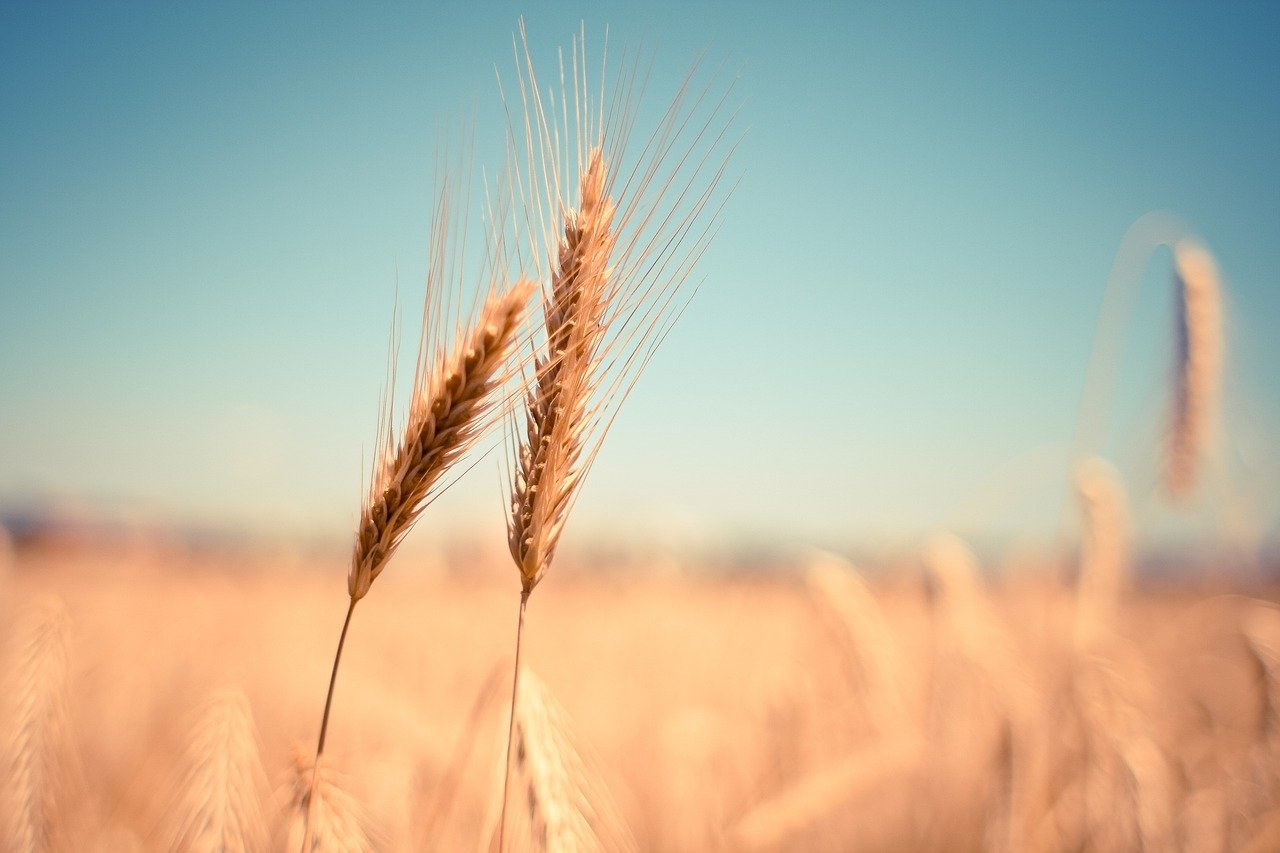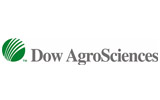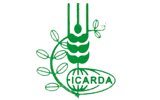Scientist: 1.5 tons per hectare of wheat in 2023 is a real result
Главная / News / Main news

The beginning of the formation of crop yields in 2023 started in the autumn of 2022 and should continue today. Kanat Akshalov, head of the Laboratory of Adaptive and agrolandscape technology of the SPC of Grain Farming named after A. I. Barayev, in an interview with ZM told about the prospects of the new agricultural season. The scientist also gave recommendations to farmers on what farmers should pay attention to at this stage of preparation for field work.
- Kanat Ashkeevich, how can we briefly describe the past season?
- Despite the meteorological and agricultural drought, farmers of the northern regions of Kazakhstan have grown a good harvest. However, the yield level was uneven and varied even within the same landscape of land use.
In general, the lessons of last season demonstrated that in farms where
serious attention was paid to moisture accumulation and its preservation,
and even in conditions of shortage and uneven summer precipitation, plants managed to withstand the June and July drought.
- Name the features of the vegetation of 2022.
- Characteristic signs of changes in weather conditions, not only last year, but also earlier, are the manifestation of heat and drought in the early spring period, hot days (air temperature over 35 degrees) during the growing season. The wind regime has become more active, which has a significant effect on the evaporation of soil moisture and on the drying of the upper soil layer during spring field work, on the manifestation of wind erosion of soils. It is worth noting that a lot of soil moisture, which is the basis for mitigating the negative effects of drought and heat, evaporates before the sowing period.
Also, the last decade of summer is characterized by unstable weather, uneven precipitation.
The sum of effective air temperatures by the end of the growing season exceeded the long-term average by 16.6%.
- One of the important indicators is the precipitation amount. Is it optimal for the reporting period?
- The first decade of January was characterized by an intensive transfer of snow mass, little of it lingered in the fields. In the fields where the formation of snow shafts was not carried out, snow accumulated in forest belts, ravines. After the December and January drops in air temperature, the surface of the snow cover is very paid and the snow practically does not linger.
It should be noted that the snow was deposited very unevenly - in plumes. In such fields, where snow retention was carried out in December, the situation has leveled off, but the snow banks are “torn” and the height of the cover is still insufficient to accumulate the necessary amount of snow water.
In the fields of Akmola region, where the height of the snow cover did not exceed 7-10 cm, the soil temperature was minus 10-13 degrees on the surface.
Reserves of productive moisture for stubble precursors in the meter layer are about 40-50 mm, of which 47-60% are concentrated in the soil layer 0-30 cm.
In the fields where a stubble background with a height of 30-40 cm was formed by a combing harvester, the amount of snow cover after the first snowfalls by the beginning of December was up to 30 cm, and the soil was not frozen.
The reserves of soil moisture in a meter layer of soil in steam fields (well prepared) are 115-122 mm. In fields where soil preparation was not carried out in a timely manner, soil moisture reserves are only 69-65 mm.
The situation is similar in many areas of the northern regions of Kazakhstan.
- Kanat Ashkeevich, what advice can you give to plant growers in light of the prevailing weather conditions?
- Observations have shown that in the conditions of this winter, the deposition of snow cover mainly depended on the height of stubble: where its height was up to 30-40 cm, respectively, the height of snow reached the same value. At a low cut, in arid zones - Korgalzhynsky, Yerementau, Zhaksynsky, Egindykolsky districts, as well as part of Tselinograd, Arshalynsky, Atbasarsky districts, the snow height did not exceed 7-9 cm.
In fields where the height of the stubble cover was 15-18 cm, there the amount of snow cover is fixed within 12-16 cm, and good snow banks are formed here.
There is little snow on steam fields prepared mechanically. There is practically no snow cover on the dump-treated arable land.
Therefore, it is not necessary to hope for a natural deposition of snow, and it is necessary to carry out snow retention.
These activities are very important in the fields with autumn winter tillage. It must be remembered that one of the available and real methods of reducing and mitigating the negative effects of drought, especially in June, is snow retention.
- Is this advice addressed to all agribusinesses?
- The only exception may be fields with high stubble left. Natural good snow deposition is also possible on certain elements of the landscape. On the slopes of the northern exposure and in the watershed areas, the natural deposition of snow cover is greater compared to other relief elements.
Therefore, when carrying out snow retention tactics, it is necessary to take into account:
categorically do not carry out snow retention along the slope.
In some cases, it is possible to refrain from snow retention if the autumn reserves of soil moisture are sufficient.
Meltwater runoff, soil flushing, and ravine formation mainly occur in steam fields. Therefore, first of all, it is necessary:
to pay attention to the predecessors,
where there are traditionally few plant residues and stubble, where the snow power is insignificant and with weak projective soil coverage from the surface of such fields, in the spring, there is intense evaporation of soil moisture.
- As a result, is it possible to assume that the farmers of the Akmola region will approach the sowing with optimal moisture reserves?
- Now we can distinguish two scenarios of possible events.
The first. Monitoring of snow deposition, conducted on January 25, 2023, shows that the height of the snow cover in the fields without snow retention varies from 9 to 18 cm, and does not exceed 20 cm. This is about 23-50 mm of water in the snow. In the spring, 14-30 mm of water will be absorbed into the soil.
Taking into account the autumn reserves, the soil moisture content after the completion of snowmelt will be approximately 44-55 mm.
It should be understood that one month passes after the snow melts and before the start of sowing. During this period, there is both an intensive evaporation of soil moisture and a decrease in it due to consumption by weeds. Spring rains, as a rule, are spent on evaporation.
As a result, we will have up to 60 mm of productive moisture in a meter layer of soil. In the absence of precipitation, crop yields will be very low!
The second scenario: When carrying out snow accumulation or after high stubble, the height of the snow cover is about 35-40 cm. This is about 85-100 mm of water in the snow. In spring, about 50-65 mm of water will be absorbed into the soil. Taking into account the autumn moisture reserves in the soil, the reserves of productive moisture in the meter layer of soil will amount to about 80-105 mm of moisture. Taking into account evaporation and rain, this amount of moisture will remain in the soil until the start of sowing.That is, relatively good moisture reserves can be obtained for stubble precursors, which, if the cultivation technology is followed, will mitigate the negative impact of drought and heat in the arid zone of Kazakhstan.
In addition, there will be problems with determining the timing of sowing and seeding rates of crops.
- Based on the existing factors, is it possible to predict the yield of grain in the new agricultural year?
- It is necessary to take into account the existence of some regularity: after dry years, favorable years follow, according to weather conditions. For example, after the acutely arid 2010, there was a fruitful 2011. At the same time, in winter, the amount of precipitation compared to the long-term average was 80.3%, but, as we know, 2011 was a high-yielding year.
The completion of harvesting operations in 2022 contributed to the passage of tariff processes in the soil. Autumn precipitation significantly replenished the reserves of productive moisture in the soil compared to 2020-2021. For example, in the zone of chernozem soils of the Akmola region, the amount of liquid precipitation for September-October was 22.9 mm with average annual indicators - 53.7 mm. In November - 20.2 mm both in liquid form and in the form of solid precipitation.
Therefore, by the reporting moment, the analysis and comparison of long-term meteorological factors in the autumn-winter period, the initial reserves of autumn soil moisture, subject to the accumulation of sufficient water reserves in the form of snow,
they provide prerequisites for good soil soaking in the spring.
Therefore, if all the recommendations are implemented in the spring, the probability of obtaining yields, in particular spring wheat, is on average higher than 1.5 tons per hectare
- quite real.
- What can help farmers plan field work tactics more effectively?
- Agricultural producers need to use information technologies more actively: satellite images, drones for monitoring snow deposition. In addition, it is necessary to keep a book of the history of fields, since fields differ both in land use landscapes and potential soil fertility. This will help to rationally and differentially plan the tactics of field work!
The material is posted on the ZM KZ portal https://margin.kz/news/11144/ychenyi-1-5-tonny-na-gektar-pshenitsy-v-2023-gody-realnyi-rezyltat/






